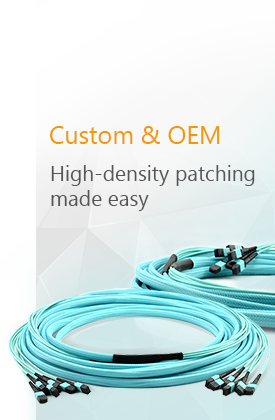Introduction
In the realm of photonics, where even micron-level misalignments can cripple performance, optical fiber alignment stands as the unsung hero of reliable light transmission. This critical process ensures that light signals traverse seamlessly between fibers, waveguides, and optoelectronic components—enabling everything from high-speed internet to life-saving medical lasers. This article delves into the science, technologies, and cutting-edge advancements shaping optical fiber alignment, offering insights into its pivotal role across industries.
The Science of Optical Fiber Alignment: Why Precision Matters
Optical fiber alignment involves positioning two or more optical components (e.g., fibers, lasers, photodetectors) with sub-micron accuracy to maximize light coupling efficiency. Even a 1-µm misalignment can cause >50% signal loss due to mode field diameter mismatches or angular offsets. Key alignment parameters include:
-
Lateral Alignment: Adjusting X/Y axes to align fiber cores.
-
Angular Alignment: Correcting tilt errors (typically <0.1°).
-
Axial Alignment: Optimizing the Z-axis gap to avoid Fresnel reflections.
Transition: Achieving such precision demands specialized tools and methodologies—let’s explore the technologies driving this field.
Core Alignment Technologies and Techniques
-
Active Alignment:
-
Process: Real-time monitoring of optical power while dynamically adjusting positions using piezoelectric actuators or motorized stages.
-
Applications: High-power laser diodes, silicon photonics packaging.
-
Accuracy: Achieves <0.1 µm resolution with six-axis stages.
-
-
Passive Alignment:
-
Process: Uses mechanical fixtures (e.g., V-grooves, ferrules) or lithographic markers for self-alignment.
-
Applications: Mass production of fiber connectors (LC, SC), planar lightwave circuits (PLCs).
-
Cost Efficiency: Reduces alignment time by 70% compared to active methods.
-
-
Machine Vision-Assisted Alignment:
-
Process: Combines high-resolution cameras (5 MP+) with image processing algorithms to detect fiducial marks.
-
Innovation: AI-driven systems predict thermal drift and compensate autonomously.
-
-
Fusion Splicing Alignment:
-
Process: Core-to-core alignment via localized heating and electric arc fusion.
-
Performance: Achieves <0.05 dB loss in telecom-grade single-mode fibers.
-
Transition: With these tools in play, let’s analyze how advanced alignment systems outperform traditional approaches.
Why Modern Alignment Systems Are Revolutionizing Photonics
-
Ultra-Low Losses: Commercial splicers now achieve <0.02 dB losses, critical for 400G ZR+ coherent transceivers.
-
Speed and Scalability: Automated systems align 500+ fibers/hour, enabling cost-effective manufacturing of multi-fiber connectors (MTP/MPO).
-
Versatility: Compatible with specialty fibers (e.g., hollow-core, polarization-maintaining) and photonic integrated circuits (PICs).
-
Reliability: Hermetic sealing and UV-cured adhesives ensure alignment stability in harsh environments (-40°C to 85°C).
A 2023 study by Yole Développement revealed that AI-enhanced alignment systems reduced production costs by 30% for LiDAR manufacturers.
Transition: These advancements are transforming industries—let’s examine high-impact applications.
Applications Driving Demand for Precision Alignment
-
Telecommunications:
-
5G Fronthaul: Ensures low-loss connectivity between remote radio units and baseband units.
-
Submarine Cables: Fusion splicing maintains signal integrity across 15,000 km transoceanic spans.
-
-
Data Centers:
-
Co-Packaged Optics (CPO): Aligns fibers to CPO engines with <1 µm tolerance for 1.6 Tb/s interconnects.
-
Quantum Computing: Aligns superconducting nanowire single-photon detectors (SNSPDs) for qubit readout.
-
-
Medical Devices:
-
Endoscopic Imaging: Precision alignment of fiber bundles enables ultra-high-resolution OCT for cancer detection.
-
-
Aerospace and Defense:
-
Fiber Optic Gyroscopes (FOGs): Accurate alignment of coiled fibers ensures navigation precision in GPS-denied environments.
-
Case Study: In 2024, a leading automotive LiDAR supplier leveraged machine vision alignment to achieve 99.9% coupling efficiency, enabling 250-meter object detection for autonomous vehicles.
Future Trends: Smart, Sustainable, and Scalable Solutions
-
AI/ML-Driven Alignment:
-
Neural networks predict thermal expansion and vibration impacts, auto-correcting alignments in real time.
-
-
Quantum Dot-Assisted Alignment:
-
Fluorescent quantum dots coated on fiber tips enable sub-nm precision via spectral analysis.
-
-
Green Manufacturing:
-
Low-energy UV adhesives and recyclable alignment fixtures reduce environmental footprint.
-
-
Heterogeneous Integration:
-
Alignment systems for hybrid silicon-photonic and III-V semiconductor devices in next-gen transceivers.
-
According to MarketsandMarkets, the optical fiber alignment market will grow at 9.4% CAGR through 2030, fueled by demands in AR/VR and AI hardware.
Conclusion
Optical fiber alignment is not merely a technical step—it’s the foundation of photonic innovation. As industries push the boundaries of speed, miniaturization, and reliability, advancements in alignment technologies will remain central to unlocking the full potential of light-based technologies.
More info about Optical Fiber Alignment, please visit our official website: www.fiber-mart.com.


